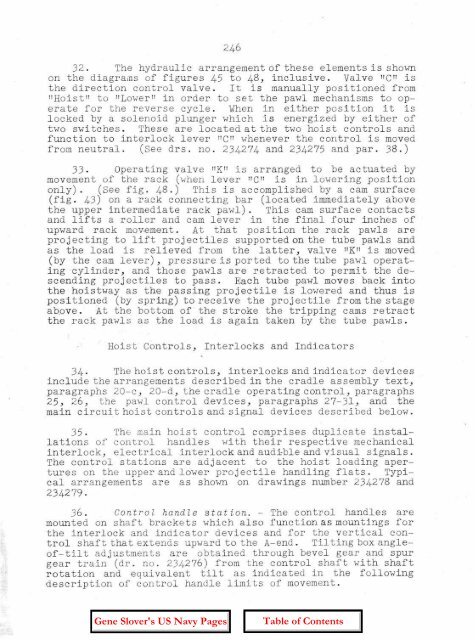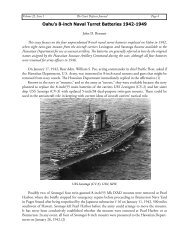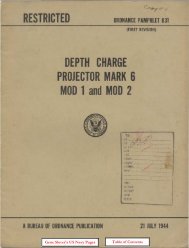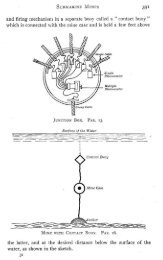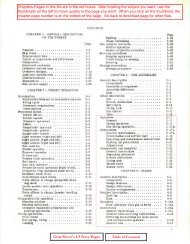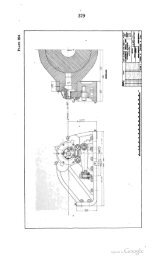OP-755 Part 2 Pages 197-401 - Personal Page of GENE SLOVER
OP-755 Part 2 Pages 197-401 - Personal Page of GENE SLOVER
OP-755 Part 2 Pages 197-401 - Personal Page of GENE SLOVER
Create successful ePaper yourself
Turn your PDF publications into a flip-book with our unique Google optimized e-Paper software.
246<br />
32. The hydraulic arrangement <strong>of</strong> these elements is shown<br />
on the diagrams <strong>of</strong> figures 45 to 48, inclusive. Valve IICIIis<br />
the direction control valve. It is manually positioned from<br />
IIHoistll to IILowerllin order to set the pawl mechanisms to opera<br />
te for the reverse cycle. When in either position it is<br />
locked by a solenoid plunger which is energized by either <strong>of</strong><br />
two switches. These are located at the two hoist controls and<br />
function to interlock lever IICIIwhenever the control is moved<br />
from neutral. (See drs. no. 234274 and 234275 and par. 38.)<br />
33. Operating valve IIKIIis arranged to be actuated by<br />
movement <strong>of</strong> the rack (when lever "ell is in lowering position<br />
only). (See fig. 48.) This is accomplished by a cam surface<br />
(fig. 43) on a rack connecting bar (located immediately above<br />
the upper intermediate rack pawl). This cam surface contacts<br />
and lifts a roller and cam lever in the final four inches <strong>of</strong><br />
upward rack mov.ement. At that position the rack pawls are<br />
projecting to lift projectiles supported on the tube pawls and<br />
as the load is relieved from the latter, valve IIKIIis moved<br />
(by the cam lever), pressure is ported to the tube pawl operatingcylinder,<br />
and those pawls are retracted to permit the descending<br />
projectiles to pass. Each tube pawl moves back into<br />
the hoistway as the passing projectile is lowered and thus is<br />
positioned (by spring) to receive the proj ectile from the stage<br />
above. At the bottom <strong>of</strong> the stroke the tripping cams retract<br />
the rack pawls as the load is again taken by the tube pawls.<br />
Hoist e6ntrols, Interlocks and Indicators<br />
34. Thehoist controls, interlocks and indicator devices<br />
include the arrangements described in the cradle assembly text,<br />
paragraphs 20-c, 20-d, the cradle operating control, paragraphs<br />
25-' 26, the pawl control devices, paragraphs 27-31, and the<br />
main circuit hoist controls and signal devices described below.<br />
35. The main hoist control comprises dupl Lcat e installations<br />
<strong>of</strong> control handles with their respective mechanical<br />
interlock, eiectrical interlock and audi-ble and visual signals.<br />
The control stations are adjacent to the hoist loading apertures<br />
on the upper and lower projectile handling flats. Typical<br />
arrangements are as shown on drawings number 234278 and<br />
234279.<br />
36. Control handle station. - The control handles are<br />
mounted on shaft brackets which also function as mountings for<br />
the interlock and indicator devices and for the vertical control<br />
shaft that extends upward to the A-end. Tilting box angle<strong>of</strong>-tilt<br />
adjustments are obtained through bevel gear and spur<br />
gear train (dr. no. 234276) from the control shaft with shaft<br />
rota tion and equivalent til t as indicated in the following<br />
description <strong>of</strong> control handle limits <strong>of</strong> movement.


